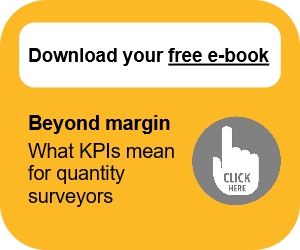Elemental cost plan for design and construction
Cost plans are generally prepared by cost consultants (often quantity surveyors). They evolve through the life of the project, developing in detail and accuracy as more information becomes available about the nature of the design, and then actual prices are provided by specialist contractors, contractors and suppliers.
They range from very early initial cost appraisals through to tender pricing documents and the final account:
- Initial cost appraisals (studies of options prepared during the feasibility study stage).
- Elemental cost plan (prepared during the project brief stage and carried through to detailed design).
- Approximate quantities cost plan (from the end of detailed design through to tender).
- Pre-tender estimate (prepared alongside tender documentation).
- Tender pricing document (strictly speaking this is not a priced document, but is part of the tender documentation issued to the contractor for pricing).
- Contract sum (agreed with the contractor during the tender period and adjusted during the construction period).
- Contract sum analysis (a break down of the contract sum prepared by the contractor on design and build projects).
- Final account (agreed during the defects liability period).
Other than initial cost appraisals, these all relate to the construction cost of the project (rather than wider project costs that the client might incur, which could include; fees, equipment costs, furniture, the cost of moving staff, contracts outside of the main works, and so on). It is important that the client makes clear what costs should be monitored by the cost consultant and what will remain within the control of the client organisation.
The elemental cost plan is a detailed cost plan which is broken down into a series of elements. Initially, the elemental cost plan will simply be the total construction cost for the project divided into elements on a percentage basis. As the design becomes more detailed, however, the elemental cost plan will be 'measured', based on the actual quantities of work and materials that will be required to construct the project.
The elemental cost plan should be prepared in a spreadsheet format that is easy to interrogate and import into costing software and should adopt a standard approach such as that defined by the new rules of measurement (NRM).
The elemental cost plan should set out any assumptions that have been made, should identify any exclusions agreed with the client and should present an outline assessment of whole life costs. It might also include a list of abnormal or non-standard items, to help inform any value management exercises.
The elemental cost plan will be monitored by the cost consultant. The client's project cost plan is monitored by the client's finance officer and is calculated by adding items such as:
- Inflation.
- Professional fees.
- VAT.
- Client contingency.
- Statutory fees.
- Exclusions.
NB: NRM1: Order of cost estimating and cost planning for capital building work, gives the following definition of an elemental cost plan:
‘…the critical breakdown of the cost limit for the building(s) into cost targets for each element of the building(s). It provides a statement of how the design team proposes to distribute the available budget among the elements of the building, and a frame of reference from which to develop the design and maintain cost control. It also provides both a work breakdown structure (WBS) and a cost breakdown structure (CBS), which, by codifying, can be used to redistribute work in elements to construction works packages for the purpose of procurement.’
NRM1 defines a 'formal cost plan' as:
'...the elemental cost plan which is reported to the employer on completion of a specific RIBA Work Stage or OGC Gateway.'
Where the 'formal cost plan stage' is:
'...the point at which the quantity surveyor/cost manager formally submits an elemental cost plan to the employer for consideration.The formal cost plan stages are interlinked with the appropriate RIBA Work Stages and OGC Gateways.'
[edit] Related articles on Designing Buildings
- Approximate quantities cost plan.
- Bills of quantities.
- Budget.
- Contract sum analysis.
- Cost consultant.
- Cost of building.
- Cost plans.
- Cost reporting.
- Element unit rate.
- Elemental method.
- Elemental cost analysis.
- Elemental life cycle cost plan.
- Initial cost appraisals.
- New Rules of Measurement.
- Order of cost estimate.
- Outturn cost.
- Pre-tender estimate.
- Relevant cost.
- Sub-element.
- Tender pricing document.
- Top down and bottom up estimating.
- Whole-life costs.
[edit] External references
Featured articles and news
The history of building regulations
A story of belated action in response to crisis.
Moisture, fire safety and emerging trends in living walls
How wet is your wall?
Current policy explained and newly published consultation by the UK and Welsh Governments.
British architecture 1919–39. Book review.
Conservation of listed prefabs in Moseley.
Energy industry calls for urgent reform.
Heritage staff wellbeing at work survey.
A five minute introduction.
50th Golden anniversary ECA Edmundson apprentice award
Showcasing the very best electrotechnical and engineering services for half a century.
Welsh government consults on HRBs and reg changes
Seeking feedback on a new regulatory regime and a broad range of issues.
CIOB Client Guide (2nd edition) March 2025
Free download covering statutory dutyholder roles under the Building Safety Act and much more.
AI and automation in 3D modelling and spatial design
Can almost half of design development tasks be automated?
Minister quizzed, as responsibility transfers to MHCLG and BSR publishes new building control guidance.
UK environmental regulations reform 2025
Amid wider new approaches to ensure regulators and regulation support growth.
The maintenance challenge of tenements.
BSRIA Statutory Compliance Inspection Checklist
BG80/2025 now significantly updated to include requirements related to important changes in legislation.























